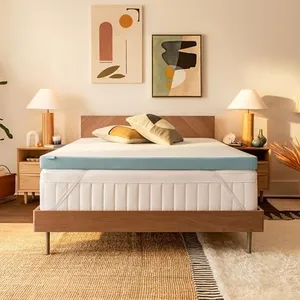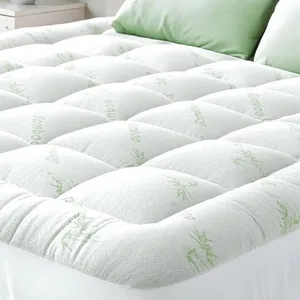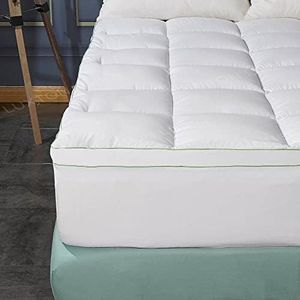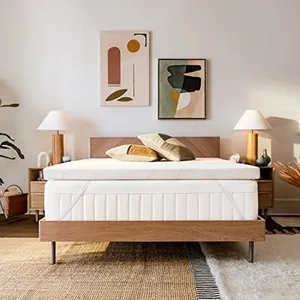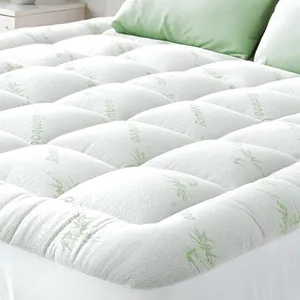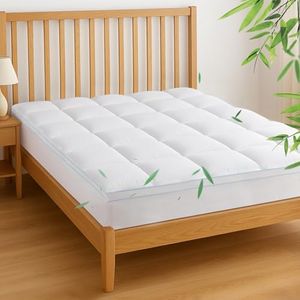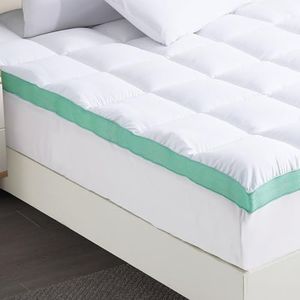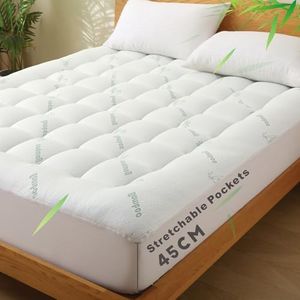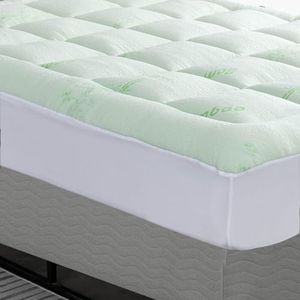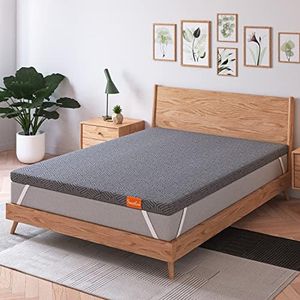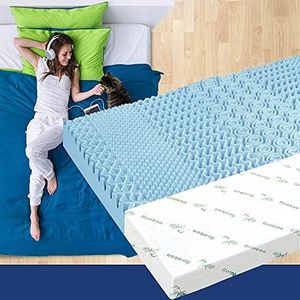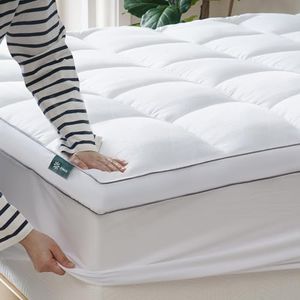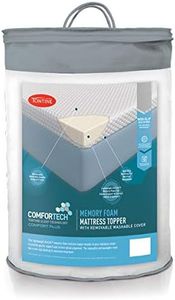We Use CookiesWe use cookies to enhance the security, performance,
functionality and for analytical and promotional activities. By continuing to browse this site you
are agreeing to our privacy policy
10 Best Bed Mattress Topper
From leading brands and best sellers available on the web.Buying Guide for the Best Bed Mattress Topper
Choosing a bed mattress topper can dramatically improve your comfort, support, and the overall feel of your bed without having to buy a new mattress. It's important to consider how you sleep, what level of firmness you enjoy, and whether you have any health or comfort needs. Mattress toppers come in a variety of materials and thicknesses, each with their own benefits for different types of sleepers. The goal is to find something that complements both you and your current mattress, so think about your sleep habits, pressure points, and temperature preferences as you review the key features.MaterialThe material of a mattress topper plays a big role in how it feels and performs. Common materials include memory foam, latex, down or down alternative, wool, and basic foam. Each material has unique characteristics: memory foam contours to your body for pressure relief, latex is bouncy and naturally resistant to dust mites, down is soft and plush, and wool regulates temperature well. When deciding, think about what you want from your topper—whether it's added softness, firmness, contouring support, cooling, or hypoallergenic properties. For example, if you sleep hot, you might want latex or wool, while for support and pressure relief, memory foam could be best.
ThicknessMattress toppers typically range in thickness from about 1 to 4 inches. Thinner toppers (1-2 inches) add a bit of softness or smooth out minor bumps, while thicker toppers (3-4 inches) provide more noticeable changes, like extra cushioning or significant firmness. Consider how much you want to change your bed—if your mattress is too firm or uncomfortable, a thicker topper can make a bigger difference. On the other hand, if you just want to add a slight plush feel, a thinner one might suit you better.
FirmnessFirmness describes how hard or soft the topper feels under your body. Toppers can be labeled from soft to extra firm. Softer toppers can provide more cushion and are good for side sleepers or those who want to relieve pressure on joints, while firmer toppers offer support for back or stomach sleepers or those who want more spinal alignment. Consider your usual sleeping position—side sleepers often prefer softer surfaces, while back and stomach sleepers benefit from more firmness for support.
Temperature RegulationSome toppers hold heat, while others allow better airflow and keep you cooler. Materials like gel-infused memory foam, latex, and wool are designed for breathability, while basic memory foam can sometimes trap body heat. If you tend to get hot at night, look for a topper highlighted as cooling or with built-in ventilating technology, or select natural materials like latex or wool.
Allergen ResistanceMattress toppers can attract dust mites, mold, and other allergens, depending on the material. Latex and wool are naturally more resistant to allergens, while some other toppers might require a hypoallergenic cover. If you have allergies or sensitivities, prioritize toppers labeled as hypoallergenic or made from naturally resistant materials.
Ease of CareSome mattress toppers are easier to clean than others. Removable and washable covers make care simple and help maintain hygiene, while materials like memory foam should only be spot-cleaned. Think about how often you’ll want to clean your topper and whether you prefer low-maintenance options.
Motion IsolationMotion isolation refers to the topper's ability to prevent movement on one side of the bed from being felt on the other side. Memory foam is especially good at this, making it ideal if you share your bed and want to minimize disturbances. If you're sensitive to a partner's movements, consider a material that offers good motion absorption.
